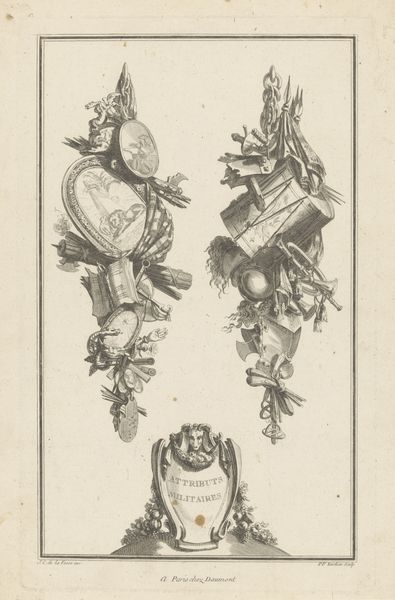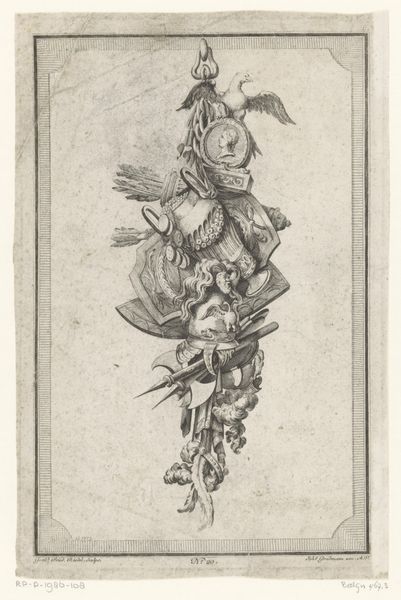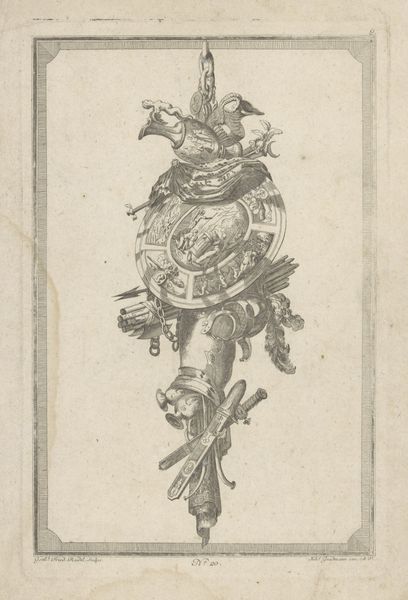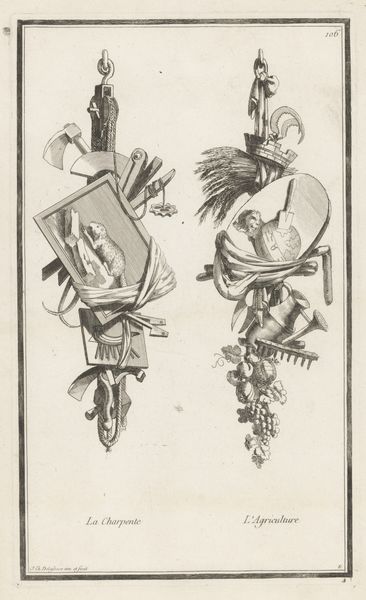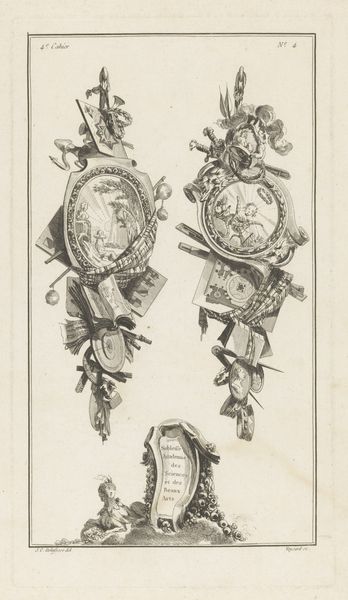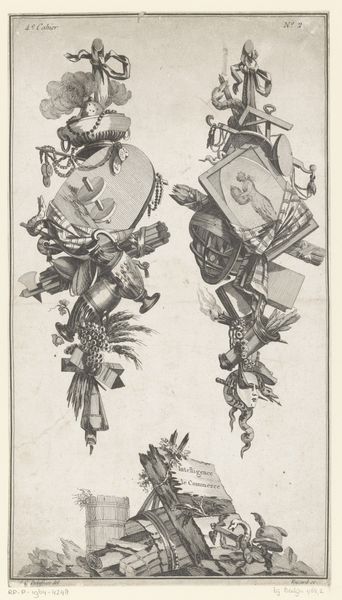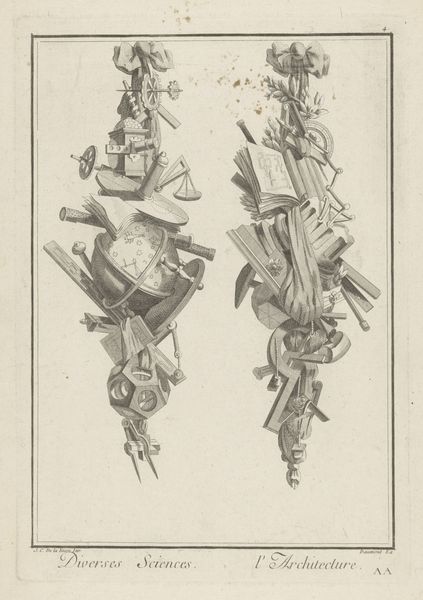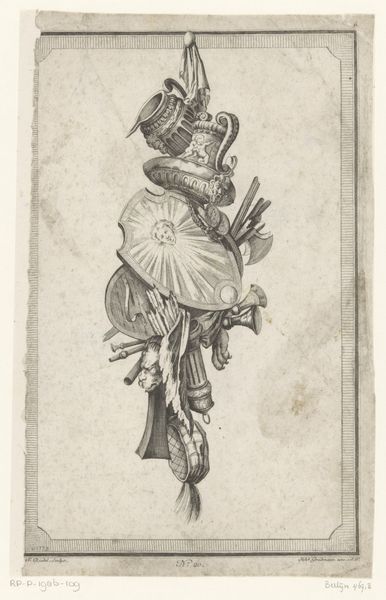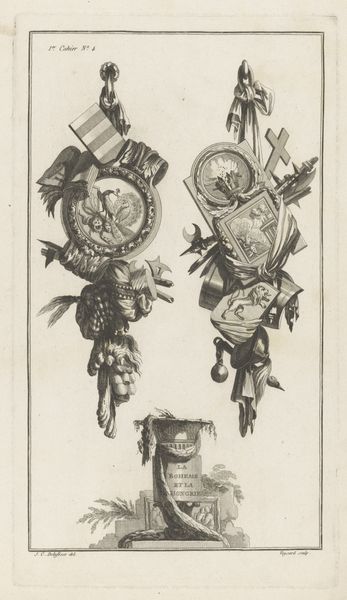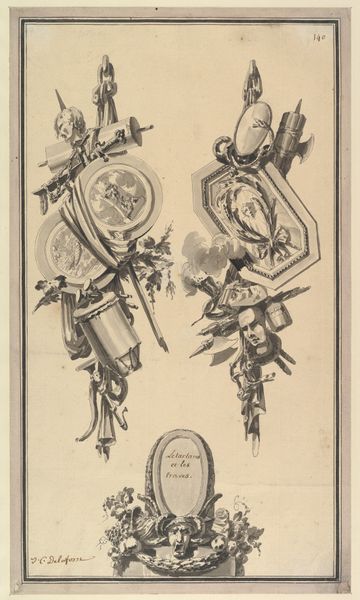
Dimensions: height 280 mm, width 184 mm
Copyright: Rijks Museum: Open Domain
Editor: So, here we have "Trofee met schilden en pijlenkoker," from 1779, an engraving by Gottlieb Friedrich Riedel, held in the Rijksmuseum. It looks like a decorative stack of armor and weapons. It’s making me think about power and protection... but maybe also fragility? How do you interpret this work? Curator: That sense of fragility is insightful. While ostensibly about power – shields, helmets, arrows, all signifiers of martial strength – it's also a meticulously crafted image, a representation *of* power rather than actual power itself. It's frozen, unable to defend or attack. Consider the socio-political context: 1779. European society was structured by strict hierarchies, yet the Enlightenment’s ideas about equality and individual rights were gaining momentum. Editor: So, could this be commenting on that shift, a kind of critique of those power structures? Curator: Precisely. Think of it as a symbol of the Ancien Régime – ornate, impressive, but ultimately brittle under pressure. It's presented almost as a design element, an aesthetic object rather than a functional assemblage of weaponry. Who was this image designed to appeal to, and what does its decorative function tell us about their relationship to these symbols of power? Editor: So, it’s less about celebrating military might, and more about understanding who consumes these kinds of images and why. Curator: Exactly! Consider, too, how easily such imagery can be co-opted. Symbols of strength, separated from lived realities of inequality and violence, risk becoming tools of propaganda, obscuring uncomfortable truths behind a facade of noble heroism. What does it mean to display a *trophy* of weaponry when those weapons continue to inflict harm? Editor: It definitely changes my perspective. I was seeing it at face value, but now I understand there are deeper layers to unpack in terms of societal power. Curator: It's a reminder to interrogate the narratives that surround us. Even the most seemingly straightforward image carries the weight of history and ideology.
Comments
No comments
Be the first to comment and join the conversation on the ultimate creative platform.
